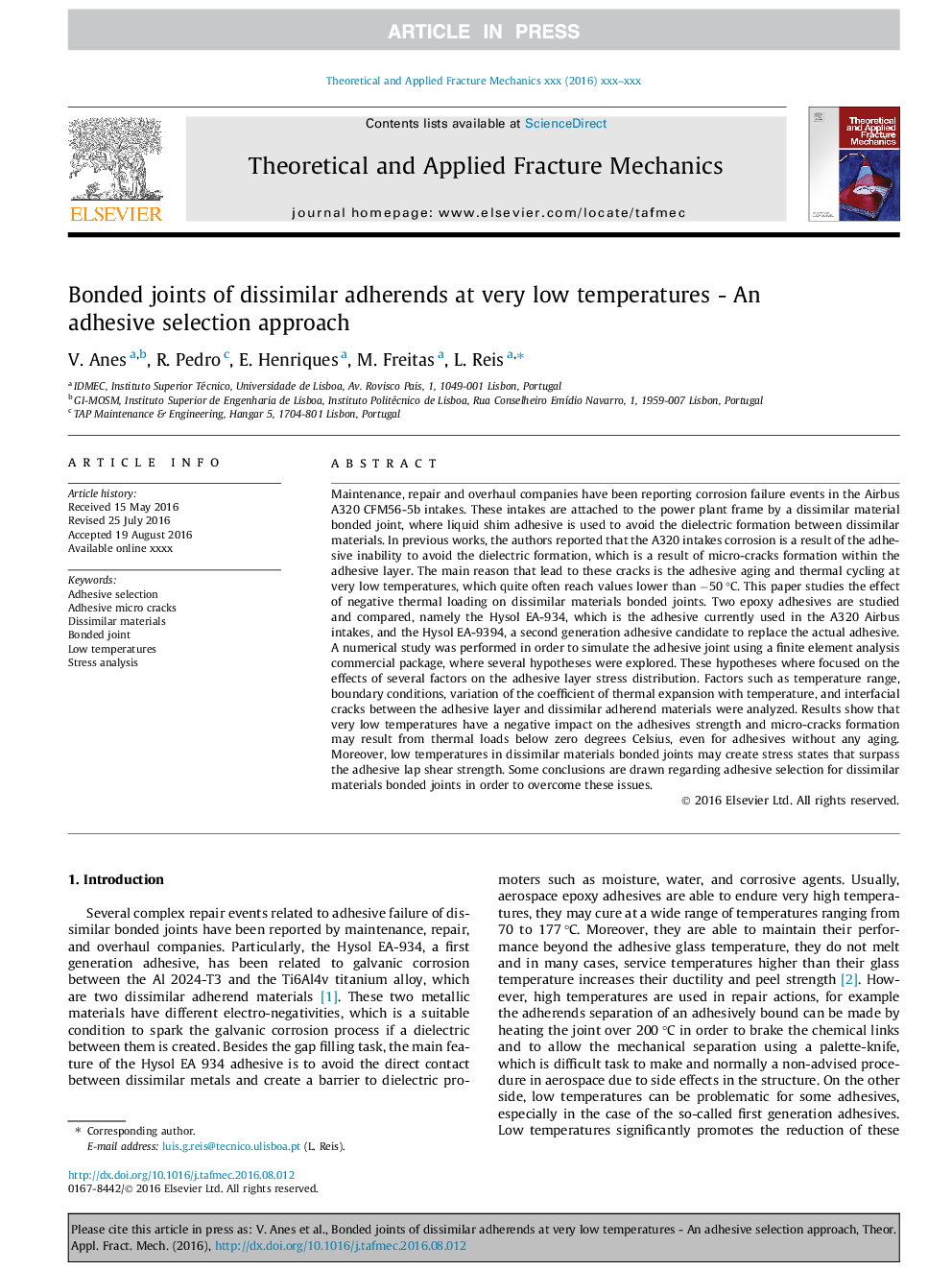| Article ID | Journal | Published Year | Pages | File Type |
|---|---|---|---|---|
| 5019822 | Theoretical and Applied Fracture Mechanics | 2016 | 14 Pages |
Abstract
Maintenance, repair and overhaul companies have been reporting corrosion failure events in the Airbus A320 CFM56-5b intakes. These intakes are attached to the power plant frame by a dissimilar material bonded joint, where liquid shim adhesive is used to avoid the dielectric formation between dissimilar materials. In previous works, the authors reported that the A320 intakes corrosion is a result of the adhesive inability to avoid the dielectric formation, which is a result of micro-cracks formation within the adhesive layer. The main reason that lead to these cracks is the adhesive aging and thermal cycling at very low temperatures, which quite often reach values lower than â50 °C. This paper studies the effect of negative thermal loading on dissimilar materials bonded joints. Two epoxy adhesives are studied and compared, namely the Hysol EA-934, which is the adhesive currently used in the A320 Airbus intakes, and the Hysol EA-9394, a second generation adhesive candidate to replace the actual adhesive. A numerical study was performed in order to simulate the adhesive joint using a finite element analysis commercial package, where several hypotheses were explored. These hypotheses where focused on the effects of several factors on the adhesive layer stress distribution. Factors such as temperature range, boundary conditions, variation of the coefficient of thermal expansion with temperature, and interfacial cracks between the adhesive layer and dissimilar adherend materials were analyzed. Results show that very low temperatures have a negative impact on the adhesives strength and micro-cracks formation may result from thermal loads below zero degrees Celsius, even for adhesives without any aging. Moreover, low temperatures in dissimilar materials bonded joints may create stress states that surpass the adhesive lap shear strength. Some conclusions are drawn regarding adhesive selection for dissimilar materials bonded joints in order to overcome these issues.
Related Topics
Physical Sciences and Engineering
Engineering
Mechanical Engineering
Authors
V. Anes, R. Pedro, E. Henriques, M. Freitas, L. Reis,
